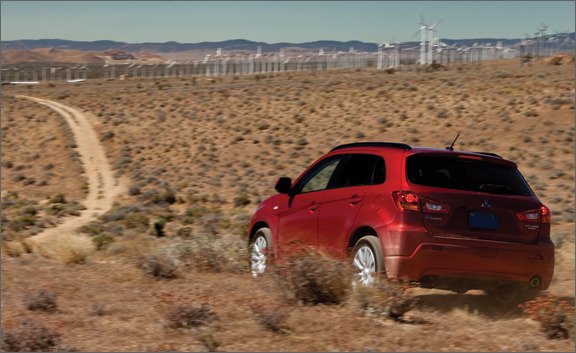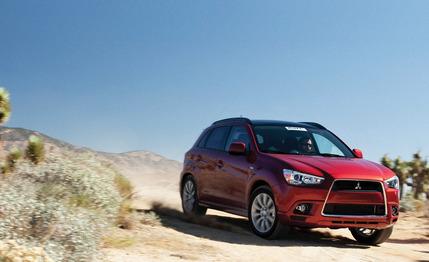 Short Take Road Test
Short Take Road Test

To battle their way into this business, newcomers should wield something unexpected. The new Nissan Juke, for example, has Plutonian styling and knockout dynamics. What does the Outlander Sport have that will allow it to blast through?
Unfortunately, the list is short. Mitsubishi’s new cute-ute is plastered with the company’s bilevel, trapezoidal corporate face, and there’s an optional, 38-inch-long-by-34-inch-wide hole in the ceiling covered by an immovable piece of “panoramic” glass. A power sunshade keeps you from baking, and at night it is moodily lit golden by recessed LEDs, which you can turn off.
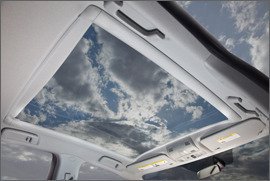
The Outlander Sport will be one of the class runts. It’s shorter and narrower (and a couple hundred pounds lighter) than most of its competitors and offers less cargo space inside. Still, the Sport squeezes in five seatbelts, split folding rear seats, and optional niceties such as navigation, xenon headlights, a rearview camera, and 18-inch wheels on the uplevel SE (the base ES has 16s). The optional three-mode all-wheel drive can be locked in the four-wheel setting, left in two-wheel drive, or handed over to the computer via a console rotary switch.
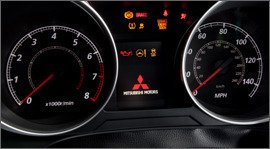
It may evoke the crafty Lancer with its face, but our CVT-equipped SE needed a very un-Lancer-like 9.9 seconds to hit 60 mph and almost 18 seconds for the quarter-mile. Even the larger Outlander with its 2.4-liter four is fleeter. The Sport’s 2.0-liter is a smaller version of the 2.4; despite having variable valve timing on both cams, the 4B11—as Mitsubishi calls it—works hard but managed to keep our 3333-pound deluxe Sport moving at the pace of traffic. However, if you like to jump ahead of queues from the right lane at stoplights, look elsewhere.

All-wheel drive comes only with the belt-and-pulley continuously variable automatic transmission (a five-speed stick is the alternative). There’s no snow in L.A., but we did get the Sport down a sandy desert wash with only some scrapes to the low-hanging Âbumper plastic. On pavement, the steering, brakes, and suspension are reassuringly slack-free, but be prepared for some road roar from the big tires.
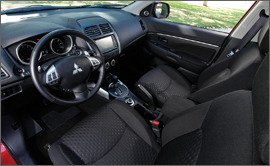
In the Outlander Sport, you see no Evo and hear no Evo, which is perhaps the vehicle’s worst knock. Mitsubishi’s current identity is built around its hero car and the performance halo it throws off. The Sport needs to reflect more of it.
